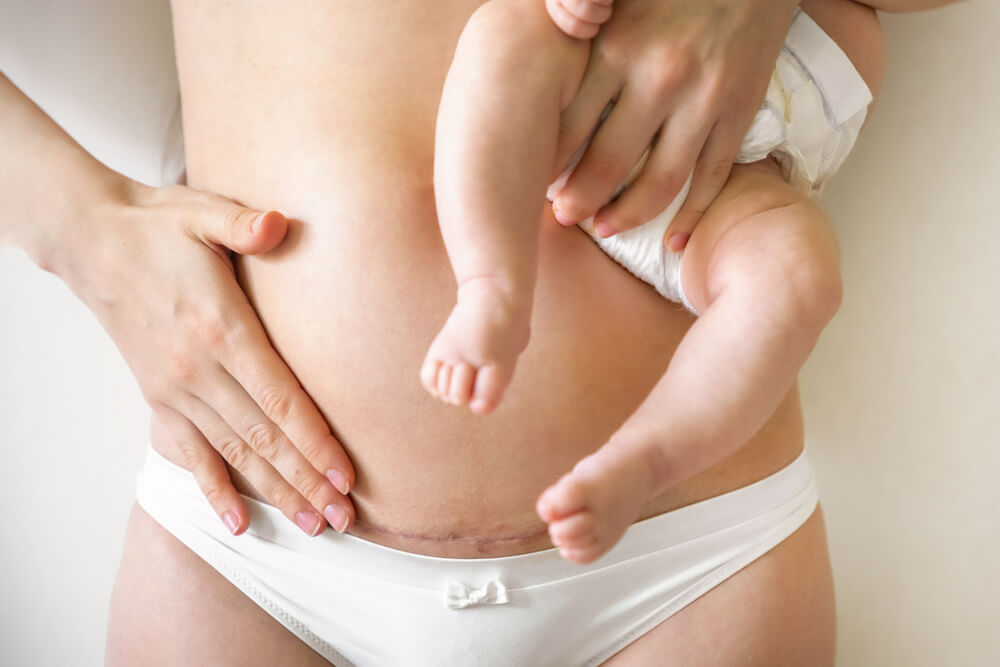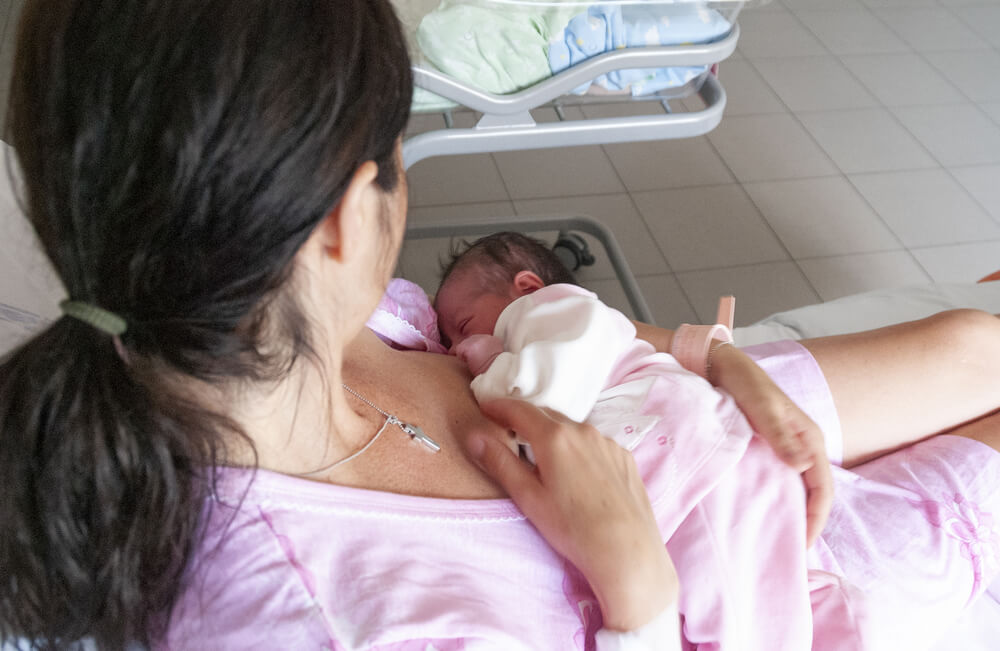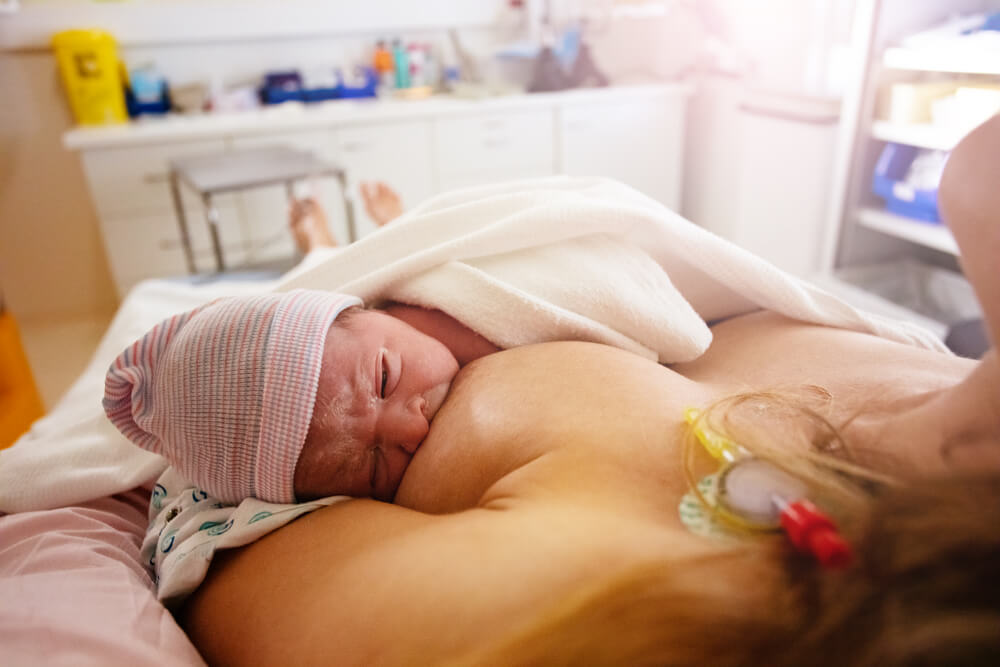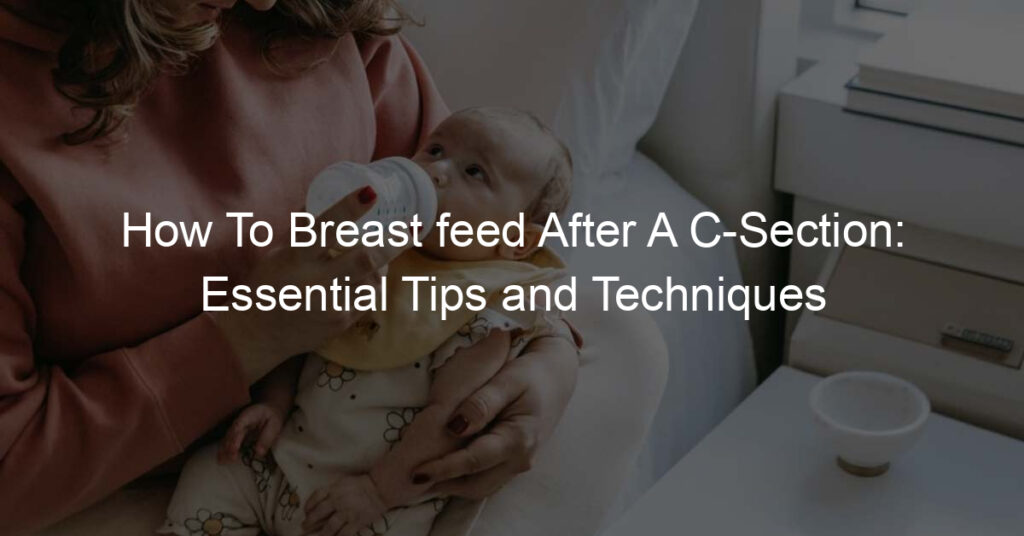Breastfeeding after a C-section can be a bit challenging, but with the right guidance and perseverance, you can create a fulfilling experience for both you and your baby.
Cesarean deliveries often require a more careful approach to breastfeeding due to the healing process, and mothers may encounter certain obstacles as they begin this journey asking how to breast feed after a c-section.
Understanding the various factors that can impact successful breastfeeding after a C-section, including recovery, pain management, and finding the ideal positions, will help you overcome these hurdles and ensure a positive breastfeeding experience.
C-section recovery often influences how soon you might start breastfeeding, as managing pain and finding comfortable positions are crucial during the initial days after delivery.
Prioritizing skin-to-skin contact as early as possible can strengthen the bond between you and your baby while fostering a more seamless transition to breastfeeding.
Furthermore, properly latching your baby to your breast and maintaining a balanced diet will contribute to a successful breastfeeding routine, even after a C-section.
Key Takeaways
- Focus on comfortable breastfeeding positions and proper latching techniques after a C-section.
- Prioritize skin-to-skin contact to enhance your bond with your baby and support breastfeeding success.
- Reach out to lactation consultants or support groups for additional guidance on breastfeeding after a C-section.
How To Breast feed After A C-Section

After a C-section, it’s essential to give yourself time to heal and adjust. Your body has undergone a significant procedure, and you’ll need to focus on proper care and recovery.
For the first few weeks, it’s normal to experience pain and discomfort. However, with the right care and attention, breastfeeding can be successful despite having a C-section.
During the initial stages of recovery, it’s crucial to manage your pain effectively. Typically, doctors will prescribe medications to help alleviate discomfort.
Remember, taking these medications as prescribed is important for your recovery and should not negatively impact breastfeeding.
Make sure to follow your doctor’s instructions carefully, and always check with them if you have any concerns about the medication or its effects on breastfeeding.
Your mobility might be limited right after the surgery. Therefore, choosing a comfortable position for breastfeeding is essential. The football hold is a popular position for new mothers who had a C-section.
You can use a pillow to support your baby at your side and hold your baby’s head in your open hand as you guide them towards your breast. This position helps avoid putting pressure on your incision area.
It’s normal to feel fatigued and have less energy during your C-section recovery. Make sure to ask for help from your partner, family members, or support team when needed.
It can be beneficial for you to rest and recover while your support team helps with the baby’s care.
In some cases, breastfeeding may be delayed due to C-section complications. If that happens, you can pump your breast milk to maintain your milk supply and feed your baby.
A hospital-grade double electric breast pump is recommended for this purpose, as it ensures frequent stimulation and helps with milk production.
Always remember that healing from a C-section takes time and patience. Keep in touch with your healthcare providers, and don’t hesitate to ask questions or seek advice on breastfeeding after a C-section.
It might take some time to establish a breastfeeding routine, but with dedication and support, you can create a successful breastfeeding experience while recovering from your C-section.
Successful Latching Post C-Section

After a C-section, it is essential for you to establish a successful latch with your baby in order to ensure proper breastfeeding. The first step in achieving a good latch is to focus on a comfortable position for both you and your baby.
Some popular positions include the football hold or the side-lying position. A breastfeeding pillow can provide additional support and alleviate pressure on your incision during feeding.
Once you have found a comfortable position, ensure that your baby is facing your breast and that their head, shoulders, and hips are in a straight line.
You can gently brush your nipple against your baby’s lips to encourage them to open their mouth wide. When their mouth is open wide enough, quickly bring them to your breast, aiming the nipple towards the roof of their mouth. Their chin should touch your breast first.
To make sure your baby has a proper latch, pay attention to their lips and cheeks. Their lips should be flanged outward, and their cheeks should appear full and not sucked in.
You can also listen for a rhythmic sucking and swallowing pattern, which indicates a successful latch. If you are experiencing pain while breastfeeding, it is advisable to seek help from a lactation consultant or a healthcare professional, as this may be a sign of an improper latch.
Finally, remember that practice is essential in establishing a successful latch post-C-section.
It may take time for you and your baby to become comfortable with breastfeeding, but with patience and persistence, you will achieve a successful latch and begin your breastfeeding journey.
Ideal Breastfeeding Positions After C-Section

Breastfeeding after a C-section can be challenging, but with proper positioning, it becomes more comfortable for both you and your baby.
Below are three ideal breastfeeding positions after a C-section to make your feeding experience as smooth as possible.
Semi-Reclined Position
This laid-back position allows you to recline, rest, and recover while avoiding weight and pressure on your wound site. To achieve this position:
- Sit in a comfortable chair or against a well-supported bed.
- Lean back at a 45-degree angle.
- Place a pillow behind your back for extra support.
- Lay your baby on your chest, skin-to-skin.
- Help your baby latch while adjusting to a comfortable angle.
This position benefits the baby, who uses their instincts to latch onto the breast and promotes bonding between you and your newborn.
Side-Lying Position
The side-lying position is particularly helpful in avoiding pressure on your incision. To get into this position:
- Lie down on your side with a pillow under your head for support.
- Place a small rolled-up towel behind your lower back to maintain the side-lying posture.
- Lay your baby on their side, facing your breast.
- Support your baby’s head and neck with one hand while guiding their mouth to latch.
- Use your other hand to hold your breast, ensuring your baby has a good latch.
Make sure both you and your baby are comfortable, and consider placing a pillow between your knees for added support.
Football Hold Position
The football hold position is ideal for moms with larger breasts or after a C-section, as it keeps weight off the incision area. To achieve this position:
- Sit in a comfortable chair with armrests or on a bed with pillows to support your back.
- Place your baby at your side, under your arm.
- Support your baby’s head and neck in the crook of your arm, ensuring they are facing your breast.
- Use your other hand to hold your breast, guiding your baby to latch on securely.
This position allows you to have great visibility of your baby’s latch and can be more comfortable for both you and your baby during feeding sessions.
Managing Pain While Breastfeeding

Breastfeeding after a C-section can be challenging due to pain and discomfort related to the incision.
To make the process as comfortable as possible, consider the following tips.
Choose a comfortable position. Find a position that keeps your baby away from the incision site while still allowing for proper latch-on. The football hold or the side-lying position are popular choices for breastfeeding after a C-section, as they help to avoid putting pressure on the surgical wound.
Use pillows for support. Placing pillows under your arms, behind your back, or between your knees can help alleviate strain on your incision and make breastfeeding more comfortable. A nursing pillow designed for this purpose can also be helpful.
Take pain medication as prescribed. Your doctor may prescribe pain relievers to ease your discomfort after a C-section. If you are concerned about the potential effect of medication on your baby, discuss your options with your healthcare team. Many common pain relievers are compatible with breastfeeding.
Implement proper latch techniques. Ensuring a good latch can help prevent nipple soreness and minimize any pulling sensations that may exacerbate incision discomfort. If you are having difficulty achieving a proper latch, consult with a lactation consultant or another experienced professional for guidance.
Give yourself time to heal. Remember that recovering from a C-section takes time, and it’s important to allow yourself adequate rest. As your body heals, you should gradually experience less pain and discomfort while breastfeeding. Don’t hesitate to ask for help from your partner, friends, or family members to make the process as comfortable and smooth as possible.
Breastfeeding Challenges After C-Section

Delayed Milk Production
After a C-section, it may take longer for your milk to come in compared to a vaginal delivery. This is because your body has undergone major surgery, which may delay the hormonal signals that trigger milk production.
To overcome this challenge, try to put your baby to your breast as soon as possible and breastfeed frequently to stimulate milk production.
Hesitancy In Baby’s First Latch
Your baby may also be tired and weak after a C-section, especially if you received general anesthesia. This can result in hesitancy to latch onto your breast for the first time.
To help your baby latch, position them comfortably, ensuring their chin touches your breast and their nose is free to breathe. Be patient and try different breastfeeding positions to find one that works for both of you.
Effect Of Medications
The medications used during and after a C-section can affect both you and your baby. Anesthesia may make you and your baby feel sleepy and weak, which can complicate breastfeeding initially.
If you had general anesthesia, breastfeeding may be delayed until it wears off, while with an epidural, you may be able to breastfeed shortly after the surgery.
It’s crucial to communicate with your healthcare providers about your intention to breastfeed so they can prescribe the most suitable pain medications that won’t interfere with breastfeeding.
Importance of Skin-To-Skin Contact
Skin-to-skin contact plays a significant role in the success of breastfeeding after a cesarean section. This close physical connection between you and your newborn helps both of you bond, regulate your baby’s temperature, and stimulate milk production.
The mutual touch is beneficial not just for you but for your baby as well in promoting feeding cues and comfort.
One of the key elements in initiating breastfeeding is Early Essential Newborn Care (EENC), which involves prolonged skin-to-skin contact between the mother and baby.
This technique helps in establishing a healthy breastfeeding relationship, even if you have had a C-section birth. It facilitates important newborn care interventions and assures the baby gets off to a robust start with breastfeeding.
In some cases, you may not be able to initiate immediate skin-to-skin contact due to the C-section procedure or other health complications.
However, your partner can step in and provide a skin-to-skin connection with your baby, providing similar benefits.
Moreover, if you can’t have this contact during the first 24 hours, you can still initiate breastfeeding, although it may take more time than usual. Patience will be key in this situation.
To ensure a successful breastfeeding experience after a C-section, remember these tips:
- Maintain skin-to-skin contact whenever possible to encourage breastfeeding cues
- Reach out for professional help if needed
- Breastfeed frequently to keep your milk flowing
- Find comfortable positions that help you and your baby nurse without strain
By incorporating skin-to-skin contact during the early stages of your baby’s life, you increase the chances of establishing and maintaining a strong breastfeeding relationship.
This will benefit both your health and your baby’s growth and development.
Breastfeeding Diet Tips

After a C-section, it’s essential to maintain a healthy diet to support both your healing process and milk production.
Here are some tips to help you optimize your diet while breastfeeding after a C-section.
Stay Hydrated: Dehydration can affect your milk supply. Ensure you are drinking enough water throughout the day. Aim for at least 8 to 10 glasses daily, and make sure to drink a glass of water every time you nurse.
Consume Balanced Meals: A well-balanced diet, rich in protein, complex carbohydrates, and healthy fats, will help support milk production and your overall well-being. Include lean meats, whole grains, fruits, vegetables, and legumes in your meals.
Increase Caloric Intake: Breastfeeding requires extra calories, particularly after a C-section, when your body is healing. Experts recommend adding an additional 300-500 calories a day to your diet. Opt for nutrient-dense foods like whole grains, lean protein, nuts, seeds, and avocados.
Calcium and Vitamin D: These nutrients are crucial for your baby’s bone development and your own bone health. Incorporate foods rich in calcium and vitamin D, such as dairy products, leafy greens, and fortified cereals.
Keep Snacking: Maintaining your energy levels is vital during the postpartum period. Keep healthy snacks handy, such as cut-up fruits, yogurt, nuts, or whole-grain crackers. Snack in between meals to keep yourself energized.
Avoid Excess Caffeine: Limit your caffeine intake while breastfeeding, as it can affect your baby. Stick to one or two cups of coffee or tea a day and opt for decaffeinated versions when possible.
Be mindful of your body’s needs and the changes it undergoes as you recover from a C-section and breastfeed your baby. Prioritizing a healthy diet will not only benefit you but also provide your baby with the necessary nutrients for their growth and development.
For more information on breastfeeding after a C-section, check out this guide from Medela.
Getting Help: Lactation Consultants And Support Groups

Recovering from a C-section can be challenging, but seeking help from lactation consultants and support groups can make a significant difference in your breastfeeding journey.
These experts can offer guidance, advice, and emotional support to help you confidently breastfeed your baby after a cesarean birth.
Lactation Consultants: It’s essential to connect with a lactation consultant as early as possible. They can visit you following your C-section to assist with positioning your baby while nursing, minimizing pain, and ensuring proper latch. Many hospitals have lactation consultants on staff, but you can also find them through private practices or referrals from your healthcare provider.
Support Groups: Joining a breastfeeding support group like La Leche League could provide invaluable resources and emotional support. Other moms who have experienced similar challenges can offer advice and encouragement. Aim to attend a group meeting before your baby is born so you can ask questions and gain essential information about breastfeeding after a C-section.
Educate Yourself: Take the initiative to learn as much as you can about breastfeeding post-surgery. Research online, read books, or attend breastfeeding classes. The more informed you are, the more confident you will feel when navigating potential challenges.
Create a Support Network: Surround yourself with friends and family members who support your breastfeeding goals. If possible, connect with other moms who have successfully breastfed after a C-section. Having a network of people to lean on for emotional support and practical advice can make a crucial difference in your success.
Remember, the key to successful breastfeeding after a C-section lies in seeking professional guidance, connecting with like-minded individuals, and arming yourself with sufficient knowledge.
By leveraging these resources, you can attain a rewarding breastfeeding experience for both you and your baby.
Conclusion
Breastfeeding after a C-section is both possible and beneficial for you and your baby. It may take a little more effort and patience, but with the right approach, you can establish a successful breastfeeding routine.
Remember to focus on frequent breastfeeding or pumping to initiate milk supply and get comfortable with breastfeeding positions that work best for you.
It’s essential to communicate with your healthcare team to make sure you are getting the support you need. Don’t hesitate to ask for help from lactation consultants, nurses, or your pediatrician.
They can provide guidance on techniques, positions, and other helpful tips specific to your situation. And always remember to listen to your body and make your comfort a priority.
Frequently Asked Questions
How soon can I start breastfeeding after a C-section?
You can start breastfeeding as soon as you feel comfortable after your C-section. It may be helpful to put your baby to your breast as soon as possible, even within the first hour of birth, to stimulate milk production.
However, each individual’s experience may vary, so consult with your healthcare provider for personalized guidance.
Do pain medications affect breastfeeding post C-section?
Pain medications that are commonly prescribed after a C-section are generally considered safe for breastfeeding. Yet, it is important to discuss any potential interactions or side effects with your healthcare provider to ensure the safety of both you and your baby.
Why is it challenging to breastfeed after a C-section?
Breastfeeding after a C-section can be challenging for several reasons, including pain, discomfort, and delayed milk production.
Additionally, mobility limitations and positioning difficulties can make it more difficult to find a comfortable breastfeeding position.
Communicate with your healthcare team about any challenges you face so they can provide appropriate support.
Are there any recommended foods to boost breast milk supply after a C-section?
While no specific foods are guaranteed to increase milk supply after a C-section, a well-balanced diet can help support your body’s milk production.
Focus on consuming plenty of protein, complex carbohydrates, fruits, vegetables, and healthy fats. Hydration is also essential for maintaining a healthy milk supply, so be sure to drink plenty of water throughout the day.
Is it safe to pump milk after a Cesarean delivery?
Yes, it is generally safe to pump milk after a Cesarean delivery. In fact, pumping milk can help stimulate milk production if you are experiencing delays or challenges with breastfeeding.
Consult with your healthcare provider if you have concerns about pumping or need guidance on technique and equipment.
How can I improve breast milk supply if I had a planned C-section?
To improve breast milk supply after a planned C-section, consider breastfeeding or pumping as soon as you feel comfortable after delivery. Frequent and effective milk removal is key to building and maintaining a healthy milk supply.
Pay attention to your baby’s feeding cues and try to nurse or pump every 2-3 hours. If you’re having difficulty, reach out to a lactation consultant or your healthcare provider for guidance and support.














